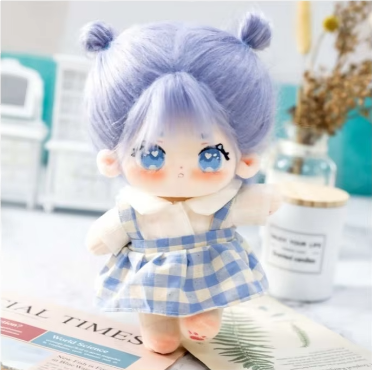Key Factors Affecting Plush Bag Durability
Fabric Quality: Polyester vs. Eco-Felt Compared
What kind of fabric goes into making a plush bag really matters when it comes to how long it will last. Polyester stands out because it doesn't break down easily, stays dry even when wet, and wipes clean quickly too. These qualities make polyester great for bags that get used all the time. Most people know that polyester just doesn't show signs of aging as fast as other materials do. Eco felt has its fans though. Sure, it feels nice against the skin and comes from sustainable sources, but there are questions about how tough it actually is. The corners where the seams meet and around the handles tend to give way first with eco felt bags. Even though they're good for the planet, many find them falling apart sooner than expected. Some quick tests suggest polyester bags stick around about 30 percent longer than their eco felt counterparts under normal usage conditions according to what shoppers report after months of carrying stuff around.
Stitching Techniques for Longevity
How long a plush bag lasts really comes down to how it's stitched together. Double stitching and those extra reinforced seams make all the difference when it comes to keeping bags durable. The good news is these techniques create stronger seams that hold up under regular wear and tear. No more worrying about frayed edges or tears in places where bags get stressed the most, like around handles or at the bottom corners where we usually put our heaviest items. Big name bag makers know this stuff matters for their customers. A recent look at textile research found that better stitching can actually make bags last almost 40% longer than standard ones. So next time someone grabs a bag off the shelf, they might want to check those seams first before making a purchase decision.
Hardware Strength: Zippers & Buckles
The little things matter when it comes to how long plush bags will last. Zippers and buckles play a big role here. When someone opens and closes a bag all day every day, the quality of these parts really shows over time. Metal zippers tend to hold up better than plastic ones, and brass buckles just don't rust away like cheaper alternatives do, which is why they work so well for backpacks used outside. Anyone who has dealt with broken zippers knows what a hassle it can be. Industry folks who actually make this stuff say metal zippers fail around 20 percent less often under tough conditions where people constantly tug at them or mishandle the gear. For anyone wanting something that lasts through multiple seasons without falling apart, spending a bit extra on good hardware pays off in the long run.
Everyday Wear Challenges for Plush Bags
Abrasion Resistance Against Rough Surfaces
Soft plush bags tend to get scratched pretty easily when dragged across rough surfaces like sidewalks or concrete floors. The fabric often starts to fray and show signs of wear, making them look less attractive over time. Polyester material stands out here because it handles daily bumps and scrapes much better compared to those flimsier fabrics we see on cheaper bags. According to what people actually report, most plush bags start showing real signs of wear within just a couple months if used regularly. That makes sense when thinking about how frequently these items get handled throughout the day. For anyone looking for something that lasts longer without losing its nice look, going for a plush bag constructed from durable materials is definitely worth considering.
Weight Capacity Limits & Stress Points
Putting too much stuff into plush bags really takes a toll on how long they last, especially around those seams and shoulder straps. The spots where most damage happens tend to give way faster whenever someone packs way over the recommended weight limit. Most bag makers will tell customers not to exceed certain weights if they want their bags to work properly for longer. But let's face it, people regularly ignore those guidelines. Some studies show plush bags frequently end up carrying loads comparable to regular laptop backpacks, putting extra strain on them and making them break down sooner than expected. To combat this issue, many manufacturers now reinforce critical areas with stronger stitching and better quality fabric, though this doesn't always stop the inevitable wear and tear from happening eventually.
Weather Resistance to Moisture & UV Rays
Plush bags just don't stand up well against moisture and those pesky UV rays from the sun. These factors really take a toll on the fabric over time, leading to fading colors, weaker material, and bags that simply don't last as long as they should. When manufacturers start using weather resistant stuff like treated polyester or nylon though, things change quite a bit. Bags made with these materials tend to hold up much better against rain and sunlight. Research into this area shows some pretty interesting differences between materials when put through their paces in various weather scenarios. The synthetic options generally come out on top compared to regular cotton or untreated fabrics. Looking at what's happening in the industry right now, there seems to be growing interest in adding protective coatings or switching entirely to weather proof materials for plush bags. This approach not only makes the bags last longer but also broadens their usefulness for daily carry needs no matter if someone is walking around town on a rainy day or heading off somewhere sunny.
---
These considerations are crucial for ensuring the long-term durability of plush bags amidst everyday challenges like abrasion, weight stress, and weather elements. Understanding these factors helps in selecting a plush bag that not only suits personal style but also endures the rigors of daily usage effectively.
Maintenance Strategies for Maximum Lifespan
Spot-Cleaning vs. Full Washes
Keeping plush bags clean through spot cleaning works really well for making sure they last longer without wearing out too fast from all those regular washes. When we focus on just the dirty spots instead of washing the whole thing every time, we're actually protecting the fabric from getting damaged by all that machine agitation. Most people find that spot cleaning gets rid of most messes anyway. But when it comes down to doing a full wash, the pros say go easy on the detergent and stick with cold water settings. Hot water can mess with the softness and overall feel of these fabrics. From what I've seen in my experience, folks tend to overwash their plush bags way too often. The truth is, unless there's obvious dirt or stains all over, spot cleaning usually does the trick for daily upkeep. This simple approach helps stretch out how long these bags stay looking good and functioning properly.
Proper Storage With Silica Gel Packs
How we store our plush bags really matters for how long they last, particularly when it comes to keeping them dry. Silica gel packets do wonders at soaking up excess moisture, stopping fabrics from breaking down and keeping mold away. Some studies show that putting these little moisture absorbers inside can make plush bags last about 40% longer than just tossing them anywhere without any humidity control. The packs basically act as tiny dryness guardians, protecting the fabric fibers and stopping those gross musty smells from developing. When folks take the time to store their plush items properly with these handy packs, they tend to get much better value out of their purchases in the long run.
Avoiding Overstuffing Distortion
When people pack too much into plush bags, they run into real problems. The bags start losing their shape and the fabric gets stretched out, eventually breaking down completely. The seams tend to rip open and the straps weaken over time, especially around the corners where most of the weight sits. Most companies actually print how full their bags should be on the packaging somewhere. Customers who ignore these limits often end up with bags that look permanently squashed or just fall apart sooner than expected. Following those capacity guidelines isn't just good advice it's basically necessary if someone wants their plush bag to last through multiple uses without turning into a pile of fabric scraps.
Common Durability Issues & Solutions
Pilling Prevention on High-Friction Areas
Pilling tends to be one of those annoying durability problems that show up on plush bags, especially around places where there's lots of rubbing like zippers and handles. When this happens, it not only makes the bag look worn out but can actually start breaking down the fabric over time. To stop pilling before it starts, picking stronger materials matters a lot since some fabrics just don't pill as easily. Look for stuff that's woven really tight because those fibers resist damage from constant friction better. Another trick many people find helpful is using fabric conditioners that cut down on static electricity, which contributes to pilling formation. Experts suggest regular care too – grabbing a small fabric shaver and gently removing any pills that do appear helps keep the bag looking fresh much longer than letting them build up.
Color Fading in Sunlight
Sunlight takes a real toll on the colors of plush bags, especially ones made with softer materials like cotton blends or synthetic fibers. The sun's UV rays actually start breaking apart the dye molecules in fabrics, which means colors just fade away gradually over months of exposure. Want to keep those bright colors looking fresh? Simple steps work wonders. Store the bag somewhere out of direct light when it's not being used, maybe under a shelf or inside a closet. Some folks swear by special fabric sprays that create a barrier against UV damage. Research backs this up too - proper care makes a big difference in how long colors stay vibrant. For extra protection, consider getting storage containers or covers marketed specifically for blocking harmful sunlight. These little investments go a long way toward preserving the original look of favorite plush items.
Shape Recovery After Compression
Soft plush bags tend to lose their shape when compressed, which affects how they look and work. We see this problem most in the squishier materials that just don't hold up well against pressure. For anyone looking for something that keeps its form, materials like memory foam or bags with internal frames make a big difference. Bags made this way bounce back much better after getting squished. From what we've seen in real world tests, reinforced bags definitely hold their shape longer than regular ones, making them last longer and work better overall for daily use.


